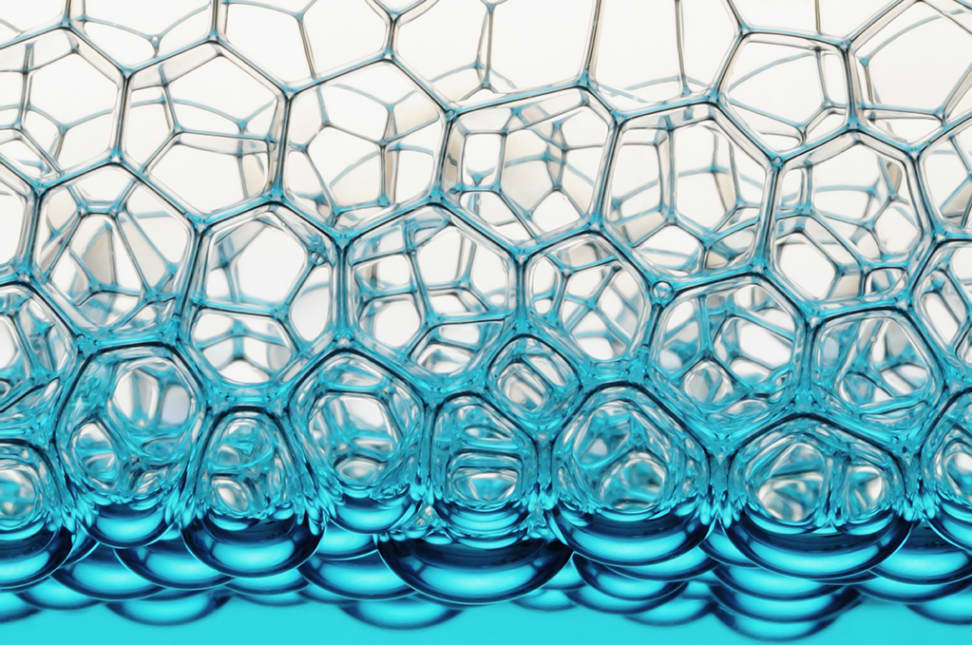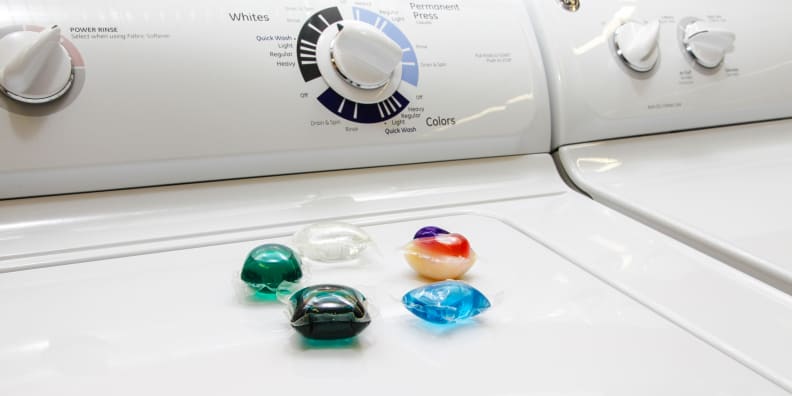Liquid, powder, or pacs: which detergent cleans clothes best?
Cost, convenience, and types of stains all factor into the best picks.
 Credit:
Flickr user "2day929"
Credit:
Flickr user "2day929"
Recommendations are independently chosen by Reviewed's editors. Purchases made through the links below may earn us and our publishing partners a commission.
The array of detergent options in your grocer's laundry aisle can be dizzying. In their never-ending quest for greater market share, manufacturers regularly tweak their formulas—to improve performance, make products "greener," or introduce new fragrances. It's no surprise the science behind laundry detergent has become quite complex.
What was once a fairly straightforward choice of liquid or powder has morphed over time to include whiteners, brighteners, oxidizing agents, fabric softeners, and all manner of new-and-improved scents.
“Cleaning is not just about stains alone,” suggests Geri Lykins, senior scientist for leading detergent brand Tide. “Cleaning is also about whiteness, brightness and freshness.”
With so many choices available, what does the savvy shopper opt for? Does one format generally outperform the others?
Dr. Charles Crawford, vice president of product development for Sun Products (which makes the detergent All) says finding the best laundry soap is more about finding the best formulation than choosing powder, liquid, or pacs. “You can have top-end formulations and lower performing products across all three formats.”
Powder
Powder detergents aren’t sexy, but they come out ahead in a couple key areas. They’re slightly cheaper per load than liquids, and considerably less expensive than pacs. The cardboard packaging is more environmentally friendly than plastic bottles or pacs. And although all detergents degrade over time, powders have a longer shelf life than liquids.
{{ amazon name="All Powder Detergent (32.5lb tub)", asin="B00KTJSKG8", align="right" }} More importantly, some studies show that powders outperform liquids. They can be particularly effective in handling outdoor stains, like ground-in dirt, as well as blood stains.
“Powders have more bleaching technology than liquids, and can go after particulate soils better,” says Elaine Cella, principal researcher for Tide. “In powder we can put in non-chlorine bleach, which you can’t put into a liquid, because it deteriorates too quickly.”
For those contending with hard water, powder may be the best pick. “The performance of all detergent formats can be impacted by hard water,” explains Crawford. “But depending on the formulation, powders tend to be impacted to a lesser extent since additives which help manage hard water are more easily and cost effectively incorporated.”
Of course, powder has a few downsides. You need to be careful not to get the box wet, to avoid caking. And pre-treating is a bit more involved. “You can make a paste with the powder and water—it’s messier but can be just as effective,” says Crawford. But always check for color fastness in a hidden section of the garment before applying onto the stain.
Liquid
Liquid is the most popular detergent format, representing 75 percent of overall sales according to Nielsen data for the past 12 months. And in the soap derby recently conducted by The Sweethome, liquids took the top two slots.

{{ amazon name="Arm & Hammer Liquid Laundry Detergent (210oz., 2-pack)", asin="B00IO2YFHK", align="right" }} Liquid detergents are convenient for spot-treating stains, and they do a great job with oils and grease. “Liquid detergents go after the more greasy soils—food and body oils,” explains Lykins.
But it's not all suds and sunshine. Liquid detergent is more expensive than powder, and the plastic jugs aren't landfill-friendly. Because water is already added, liquid detergents are also heavier. That means shipping takes a heavier environmental toll.
Another shortcoming: In liquid detergents, fragrance and brightness technology don’t mix—the fragrance deteriorates over time. “In liquid detergents you can’t get the advanced fragrance technology and the whitening in the same liquid,” says Lykins.
Pacs and pods
Laundry pacs—often referred to as "Pods," a term trademarked by Tide—are a convenient replacement for jugs of liquid or boxes of powder detergent. The soap is contained within a compact, water-soluble packet that dissolves in the wash. You simply throw it into the bottom of the washer, and then add the clothes on top.

Although pacs represent just 14 percent of the overall market, they've already surpassed powder detergents after just four years on the market, and represent the fastest growing segment of the industry. They’re more expensive—about 50 percent more, per load, than powder or liquid—but the convenience factor can’t be denied.
Unfortunately, pacs have been in the news for all the wrong reasons, almost since they first came onto the scene. Why? Because young children frequently mistake them for candy. After thousands of accidental poisonings, the industry responded with alterations to make the pacs less attractive to kids. But Consumer Reports still goes so far as to “strongly urge” households where children younger than six are ever present to skip pacs altogether.
{{ amazon name="Tide PODS HE Turbo Laundry Detergent Pacs (81 ct., Spring Meadow)", asin="B00QEMWJ34", align="right" }} Still, there are plenty of advantages to pacs and pods. The pre-measured doses provide consistent results. For people with disabilities such as rheumatoid arthritis, the pacs are easier to manage than heavy containers of powder or liquid detergent. And for those trekking to a laundromat, they're a lot more portable.
Cella says the pac design resolves some of the formulation hurdles manufacturers face with liquid detergents. “Tide’s three-chamber pod gives us a way to innovate, to allow us to separate technologies that are incompatible,” such as fragrance and brightness.
Some consumers have reported issues of pacs and pods not fully dissolving or leaving a residue on clothes, but Tide attributes this to a learning curve inherent with any new technology.
“Make sure to put the pac directly into the drum first before adding your laundry, and follow all usage instructions on the package,” says Anne Candido, senior communications manager for Tide and Downy. “Any consumer who has questions on how to use laundry pacs or isn’t 100-percent satisfied can call the Consumer Care response line printed on the package.”
The DIY option
One other option is to make your own laundry detergent, which creates a smaller environmental footprint and saves a bit of money. There are lots of recipes available on the internet, with common ingredients including water, bar soap, borax, and washing soda.
Just don't expect them to clean as well as store-bought detergent. We lab-tested DIY several recipes and found they didn’t stack up to top name brands.
Related Video
{{ brightcove '4779712986001' }}



